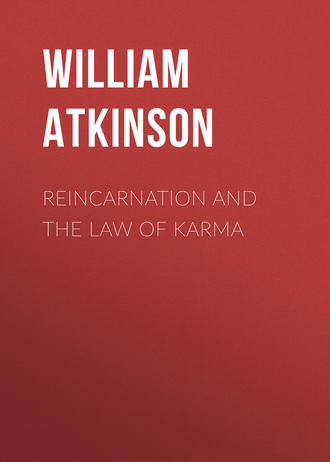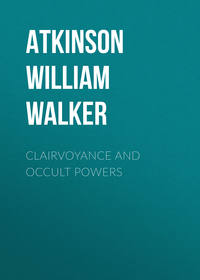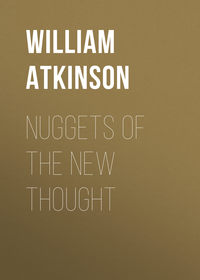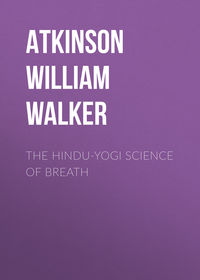
Reincarnation and the Law of Karma
That there was an Inner Doctrine in the early Christian Church seems to be well established, and that a part of that doctrine consisted in a teaching of Pre-existence of the Soul and some form of Rebirth or Reincarnation seems quite reasonable to those who have made a study of the subject. There is a constant reference to the "Mysteries" and "Inner Teachings" throughout the Epistles, particularly those of Paul, and the writings of the Early Christian Fathers are filled with references to the Secret Doctrines. In the earlier centuries of the Christian Era frequent references are found to have been made to "The Mysteries of Jesus," and that there was an Inner Circle of advanced Christians devoted to mysticism and little known doctrines there can be no doubt. Celsus attacked the early church, alleging that it was a secret organization which taught the Truth to the select few, while it passed on to the multitude only the crumbs of half-truth, and popular teachings veiling the Truth. Origen, a pupil of St. Clement, answered Celsus, stating that while it was true that there were Inner Teachings in the Christian Church, that were not revealed to the populace, still the Church in following that practice was but adhering to the established custom of all philosophies and religions, which gave the esoteric truths only to those who were ready to receive them, at the same time giving to the general mass of followers the exoteric or outer teachings, which were all they could understand or assimilate. Among other things, in this reply, Origen says: "That there should be certain doctrines, not made known to the multitude, which are divulged after the exoteric ones have been taught, is not a peculiarity of Christianity alone, but also of philosophic systems in which certain truths are exoteric and others esoteric. Some of the followers of Pythagoras were content with his 'ipse dixit,' while others were taught in secret those doctrines which were not deemed fit to be communicated to profane and insufficiently prepared ears. Moreover, all the mysteries that are celebrated everywhere through Greece and barbarous countries, although held in secret, have no discredit thrown upon them, so that it is in vain he endeavors to calumniate the secret doctrines of Christianity, seeing that he does not correctly understand its nature." In this quotation it will be noticed that not only does Origen positively admit the existence of the Inner Teachings, but that he also mentions Pythagoras and his school, and also the other Mysteries of Greece, showing his acquaintance with them, and his comparison of them with the Christian Mysteries, which latter he would not have been likely to have done were their teachings repugnant to, and at utter variance with, those of his own church. In the same writing Origen says: "But on these subjects much, and that of a mystical kind, might be said, in keeping with which is the following: 'It is good to keep close to the secret of a king,' in order that the entrance of souls into bodies may not be thrown before the common understanding." Scores of like quotations might be cited.
The writings of the Early Fathers of the Christian Church are filled with many allusions to the current inner doctrine of the pre-existence and rebirth of souls. Origen in particular has written at great length regarding these things. John the Baptist was generally accepted as the reincarnation of Elias, even by the populace, who regarded it as a miraculous occurrence, while the elect regarded it as merely another instance of rebirth under the law. The Gnostics, a mystic order and school in the early church, taught Reincarnation plainly and openly, bringing upon themselves much persecution at the hands of the more conservative. Others held to some form of the teaching, the disputes among them being principally regarding points of doctrine and detail, the main teachings being admitted. Origen taught that souls had fallen from a high estate and were working their way back toward their lost estate and glory, by means of repeated incarnations. Justin Martyr speaks of the soul inhabiting successive bodies, with loss of memory of past lives. For several centuries the early Church held within its bosom many earnest advocates of Reincarnation, and the teaching was recognized as vital even by those who combatted it.
Lactinus, at the end of the third century, held that the idea of the soul's immortality implied its pre-existence. St. Augustine, in his "Confessions," makes use of these remarkable words: "Did I not live in another body before entering my mother's womb?" Which expression is all the more remarkable because Augustine opposed Origen in many points of doctrine, and because it was written as late as A. D. 415. The various Church Councils, however, frowned upon these outcroppings of the doctrine of Reincarnation, and the influence of those who rose to power in the church was directed against the "heresy." At several councils were the teachings rebuked, and condemned, until finally in A. D. 538, Justinian had a law passed which declared that: "Whoever shall support the mythical presentation of the pre-existence of the soul and the consequently wonderful opinion of its return, let him be Anathema." Speaking of the Jewish Kaballists, an authority states: "Like Origen and other church Fathers, the Kaballists used as their main argument in favor of the doctrine of metempsychosis, the justice of God."
But the doctrine of Reincarnation among Christian races did not die at the orders and commands of the Christian Church Councils. Smouldering under the blanket of opposition and persecution, it kept alive until once more it could lift its flame toward Heaven. And even during its suppression the careful student may see little flickers of the flame – little wreathings of smoke – escaping here and there. Veiled in mystic phrasing, and trimmed with poetic figure, many allusions may be seen among the writings of the centuries. And during the past two hundred years the revival in the subject has been constant, until at the close of the Nineteenth Century, and the beginning of the Twentieth Century, we once more find the doctrine openly preached and taught to thousands of eager listeners and secretly held even by many orthodox Christians.
CHAPTER V
The Hindus
While Reincarnation has been believed and taught in nearly every nation, and among all races, in former or present times, still we are justified in considering India as the natural Mother of the doctrine, inasmuch as it has found an especially favorable spiritual and mental environment in that land and among its people, the date of its birth there being lost in the cloudiness of ancient history, but the tree of the teaching being still in full flower and still bearing an abundance of fruit. As the Hindus proudly claim, while the present dominant race was still in the savage, cave-dwelling, stone-age stage of existence – and while even the ancient Jewish people were beginning to place the foundation stones of their religion, of which the present Christian religion is but an offshoot – the great Hindu religious teachers and philosophers had long since firmly established their philosophies and religions with the doctrine of Reincarnation and its accompanying teachings, which had been accepted as Truth by the great Aryan race in India. And, throughout forty centuries, or more, this race has held steadfastly to the original doctrine, until now the West is looking again to it for light on the great problems of human life and existence, and now, in the Twentieth Century, many careful thinkers consider that in the study and understanding of the great fundamental thoughts of the Vedas and the Upanishads, the West will find the only possible antidote to the virus of Materialism that is poisoning the veins of Western spiritual understanding.
The idea of reincarnation is to be found in nearly all of the philosophies and religions of the race, at least in some period in their history – among all peoples and races – yet, in India do we find the doctrine in the fullest flower, not only in the past but in the present. From the earliest ages of the race in India, Reincarnation in some of its various forms has been the accepted doctrine, and today it is accepted by the entire Hindu people, with their many divisions and sub-races, with the exception of the Hindu Mohammedans. The teeming millions of India live and die in the full belief in Reincarnation, and to them it is accepted without a question as the only rational doctrine concerning the past, present and future of the soul. Nowhere on this planet is there to be found such an adherence to the idea of "soul" life – the thinking Hindu always regarding himself as a soul occupying a body, rather than as a body "having a soul," as so many of the Western people seem to regard themselves. And, to the Hindus, the present life is truly regarded as but one step on the stairway of life, and not as the only material life preceding an eternity of spiritual existence. To the Hindu mind, Eternity is here with us Now – we are in eternity as much this moment as we ever shall be – and the present life is but one of a number of fleeting moments in the eternal life.
The early Hindus did not possess the complicated forms of religion now existing among them, with their various creeds, ceremonials, rituals, cults, schools, and denominations. On the contrary, their original form of religion was an advanced form of what some have called "Nature-Worship," but which was rather more than that which the Western mind usually means by the term. Their "Nature" was rather a "Spirit of Nature," or One Life, of which all existing forms are but varying manifestations. Even in this early stage of their religious development they held to a belief in reincarnation of the soul, from one form to another. While to them everything was but a manifestation of One Life, still the soul was a differentiated unit, emanated from the One Life, and destined to work its way back to Unity and Oneness with the Divine Life through many and varied incarnations, until finally it would be again merged with the One. From this early beginning arose the many and varied forms of religious philosophy known to the India of today; but clinging to all these modern forms is to be found the fundamental basis idea of reincarnation and final absorption with the One.
Brahmanism came first, starting from the simple and working to the complex, a great priesthood gradually arising and surrounding the original simple religious philosophy with ceremonial, ritual and theological and metaphysical abstractions and speculation. Then arose Buddhism, which, in a measure, was a return to the primitive idea, but which in turn developed a new priesthood and religious organization. But the fundamental doctrine of Reincarnation permeated them all, and may be regarded as the great common centre of the Hindu religious thought and philosophy.
The Hindu religious books are filled with references to the doctrine of Reincarnation. The Laws of Manu, one of the oldest existing pieces of Sanscrit writing, contains many mentions of it, and the Upanishads and Vedas contain countless reference to it. In the Bhagavad Gita, Krishna says to Arjuna: "Know thou, O Prince of Pandu, that there never was a time when I, nor thou, nor any of these princes of earth was not; nor shall there ever come a time, hereafter, when any of us shall cease to be. As the soul, wearing this material body, experienceth the stages of infancy, youth, manhood, and old age, even so shall it, in due time, pass on to another body, and in other incarnations shall it again live, and move and play its part. * * * These bodies, which act as enveloping coverings for the souls occupying them, are but finite things – things of the moment – and not the Real Man at all. They perish as all finite things perish – let them perish. He who in his ignorance thinketh: 'I slay' or 'I am slain,' babbleth like an infant lacking knowledge. Of a truth none can slay – none can be slain. Take unto thy inner mind this truth, O Prince! Verily, the Real Man – the Spirit of Man – is neither born, nor doth it die. Unborn, undying, ancient, perpetual and eternal, it hath endured, and will endure forever. The body may die; be slain; be destroyed completely – but he that hath occupied it remaineth unharmed. * * * As a man throweth away his old garments, replacing them with new and brighter ones, even so the Dweller of the body, having quitted its old mortal frame, entereth into others which are new and freshly prepared for it. * * * Many have been my births and rebirths, O Prince – and many also have been thine own. But between us lies this difference – I am conscious of all my many lives, but thou lackest remembrance of thine."
In the Mahabarata is said: "Even as when he casteth off an old garment, man clothes himself in new raiment, even so the soul, casting off the wornout body, takes on a new body, avoids the fatal paths leading to hell, works for its salvation, and proceeds toward heaven."
The Brhadaranyakopanishad, one of the old Hindu writings, contains the following: "As the caterpillar, getting to the end of the straw, takes itself away after finding a resting place in advance, so the soul leaving this body, and finding another place in advance, takes himself off from his original abode. As the goldsmith taking little by little of the gold expands it into a new form, so, indeed, does this soul, leaving this body, make a new and happy abode for himself."
But to attempt to quote passages relating to incarnation from the Hindu books, would be akin to compiling a library of many volumes. The sacred writings of the East are filled with references to Reincarnation, and if the latter were eliminated it would be "like the play of Hamlet with Hamlet omitted."
We cannot enter into a description of the various schools of Hindu religious thought and philosophy in this work, for to do so would be to expand this little volume in several of larger size, so extended is the subject. But underlying the many divisions and subdivisions of Hindu thought may be found the fundamental idea of an original emanation from, or manifestation of, One Divine Being, Power and Energy, into countless differentiated units, atoms, or egos, which units, embodying in matter, are unconscious of the spiritual nature, and take on a consciousness corresponding with the form in which they are embodied. Then follows a series of embodiments, or incarnations, from lower to higher, in which occurs an evolution or "unfoldment" of the nature of the soul, in which it rises to higher and higher planes of being, until finally, after æons of time, it enters in Union with the Divine Nirvana and Para-Nirvana – the state of Eternal Bliss.
The great difference between the Hindu thought and the Grecian is that while the Greeks considered repeated life with joy as a means of greater and greater expression of life, the Hindus, on the contrary, regard life as but a period of travail and sorrow, the only light to be perceived being the expectation and hope of eventually emerging from the region of materiality, and illusion, and regaining true existence in the Spirit. The Hindus nearly all agree that this material life is occasioned by "avidya" or ignorance on the part of the soul of its own real nature and being, whereby it fails to recognize that this material life is "maya" or illusion. They hold that Wisdom consists in the soul recognizing its real nature, and perceiving the illusion of material life and things, and striving to liberate itself from the bondage of materiality and ignorance.
The principal differences among the various Hindu schools of religion and philosophical thought arise from their differing views regarding the nature and constitution of the soul on the one hand, and the means of attaining liberation and freedom from material embodiment on the other. The doctrine of "Karma" of spiritual cause and effect, which we shall consider in another chapter, also runs along with all the varying Hindu conceptions, doctrines, and theories.
Without considering the matter of differences of opinion between the various schools, concerning the nature and constitution of the soul, we may say that all the schools practically agree that the constitution of Man is a complex thing, comprising a number of sheaths, bodies, coverings, or elements, from the grosser to the more spiritual, the various sheaths being discarded as the soul advances on its way toward perfection. There are disputes between the various schools regarding terminology and the precise arrangement of these "principles," but the following classification will answer for the purpose of giving a general idea of the Hindu views on the subject, subject always to the conflicting claims of the various schools. The classification is as follows, passing from lower to higher:
1. Physical or material body, or Rupa. 2. Vitality of Vital Force, or Prana-Jiva. 3. Astral Body, Etheric Double, or Linga Sharira. 4. Animal Soul, or Kama Rupa. 5. Human Soul, or Manas. 6. Spiritual Soul, or Buddhi. 7. Divine Spirit, or Atma.
From the beginning, the tendency of the Hindu mind was in the direction of resolving the universe of forms, shapes, and change, back into some One Underlying Principle, from which all the phenomenal world emerged – some One Infinite Energy, from which all else emerged, emanated, or evolved. And the early Hindu mind busied itself actively with the solution of the problem of this One Being manifesting a Becoming into Many. Just as is the Western world of today actively engaged in solving many material problems, so was ancient India active in solving many spiritual problems – just as the modern West is straining every energy toward discovering the "How," so was ancient India straining every effort to discovering the "Why." And from that struggle of the mind of India there arose countless schools of religious and philosophical thought, many of which have passed away, but many of which persist today. The problem of the relationship of the human soul to the One Being, and the secondary problem of the life, present and future, of the individual soul, is a most vital one to all thinking Hindus today as in the forty centuries or more of its philosophical history. To the Hindu mind, all material research is of minor importance, the important Truth being to discover that "which when once known, all else is understood." But, as we have said, in spite of the numerous religions, schools, and phases of teaching, among the Hindus, the one fundamental conception of Reincarnation is never lost sight of, nor is it ever doubted in any of the forms of the philosophies or religions.
Ignoring the subdivisions of Hindu philosophical thought, we may say that the Hindu philosophies may be divided into a few general classes, several of which we shall now hastily consider, that you may get a glimpse at the variety of Hindu speculative philosophy in its relation to the soul and its destiny. You will, of course, understand that we can do no more than mention the leading features of each class, as a careful consideration would require volumes for each particular school.
We will first consider the philosophy of Kanada, generally known as the Vaisheshika Teaching, which inclines toward an Atomic Theory, akin to that formulated by the old Greek philosopher Democritus. According to this teaching the substance of the universe is composed of an infinite number of atoms, which are eternal, and which were not created by God, but which are co-eternal with Him. These atoms, combining and forming shapes, forms, etc., are the basis of the material universe. It is held, however, that the power or energy whereby these atoms combine and thus form matter, comes from God. This teaching holds that God is a Personal Being, possessing Omnipotence, Omniscience, and Omnipresence. It is also held that there are two substances, or principles, higher, that the material energies or substance, namely, Manas, or Mind, and Atman, or Spirit. Manas or Mind is held to be something like a Mind-Stuff, from which all individual minds are built up – and which Mind-Stuff is held to be eternal. Atman, or Spirit, is held to be an eternal principle, from which the Selves or Souls are differentiated. The Atman, or Spirit, or Self, is regarded as much higher than Mind, which is its tool and instrument of expression. This philosophy teaches that through progression, by Reincarnation, the soul advances from lower to higher states, on its road to freedom and perfection.
Another great school of Hindu philosophy is the philosophy of Kapila, generally known as the Sankhya system. This teaching opposes the Atomic Theory of the Vaisheshika system, and holds that the atoms are not indestructible nor eternal, but may be resolved back into a primal substance called Prakriti. Prakriti is held to be an universal, eternal energy or ethereal substance, something similar to certain Western scientific conceptions of an Universal Ether. From this eternal, universal energy, Kapila held that all the universe has been evolved – all material forms or manifestations of energy being but manifestations of Prakriti. But, the Sankhya system is not materialistic, as might be supposed at first glance, for side by side with Prakriti it offers the principle of Purusha, or Soul, or Spirit, of which all individual souls are atomic units – the Principle of Purusha being an Unity of Units, and not an Undivided One. The Purusha – that is, its units or Individual Souls – is regarded as eternal and immortal. Prakriti is devoid of mind, but is possessed of active vital energy, and is capable of producing forms and material manifestations by reason of its inherent energy, and laws, and thus produces what the Hindus call "Maya," or material illusion, which they hold to be devoid of reality, inasmuch as the forms are constantly changing and have no permanence. This philosophy holds that Prakriti, by means of the glamour of its manifestations of Maya, entices the individual souls, or Purushas, which when once in the centre of attraction of the Maya are drawn into the vortex of material existence, losing a knowledge of their real nature. But the souls never lose entirely the glimmer of the Light of the Spirit, and, consequently, soon begin to feel that they have made a mistake, and consequently begin to strive to escape the bondage of Prakriti and its Maya – but such escape is possible only through a gradual rising up from the depths of Maya, step by step, cycle by cycle, by a series of purification and cleansing of themselves, just as a fly cleanses itself of the sticky substance into which it has fallen. This escape is accomplished by Spiritual Unfoldment or Evolution, by means of Reincarnation – this Evolution not being a "growth," but rather an "unfoldment" or "unwrapping" of the soul from its confining sheaths, one by one.
Another great school of Hindu philosophy is the philosophy of Patanjali, generally known as the Yoga Philosophy, but which differs from the Yogi Philosophy of the West, which is eclectic in nature. The Yoga Philosophy of Patanjali bears some resemblance to the Sankhya school of Kapila, inasmuch as it recognizes the teachings regarding Prakriti, from which universal energy the material universe has been evolved; and inasmuch as it also recognizes the countless individual Purushas, or souls, which are eternal and immortal, and which are entrapped in the Maya of Prakriti. But it then takes a position widely divergent from the Sankhya school, inasmuch as Patanjali's Yoga school holds that there also exists a Supreme Purusha, Spirit, Soul – or God – who is without form; infinite; eternal; and above all attributes and qualities common to man. In this respect, Patanjali differs from Kapila, and inclines rather toward agreement with Kanada, of the first mentioned school of the Vaisheshika system. All three philosophers, however, seem to generally agree in the main upon the Mind Principle, which they hold to be beneath Soul or Spirit, and to be in the nature of Mind-Stuff, which is of a semi-material nature – Kapila and Patanjali even going so far as to hold that it is a manifestation of Prakriti or the Universal Energy, rather than a distinct principle. They hold that the Purusha, or Spirit, not the Mind, is the Real Self, and the source of consciousness and the real intelligence. The practical teachings of the school of Patanjali is a system by which the Purusha may escape from and overcome the Prakriti, and thus gain emancipation, freedom, and a return to its natural and original purity and power. This school, of course, teaches Reincarnation, and Progression through Rebirth, in accordance with the principles mentioned above.









